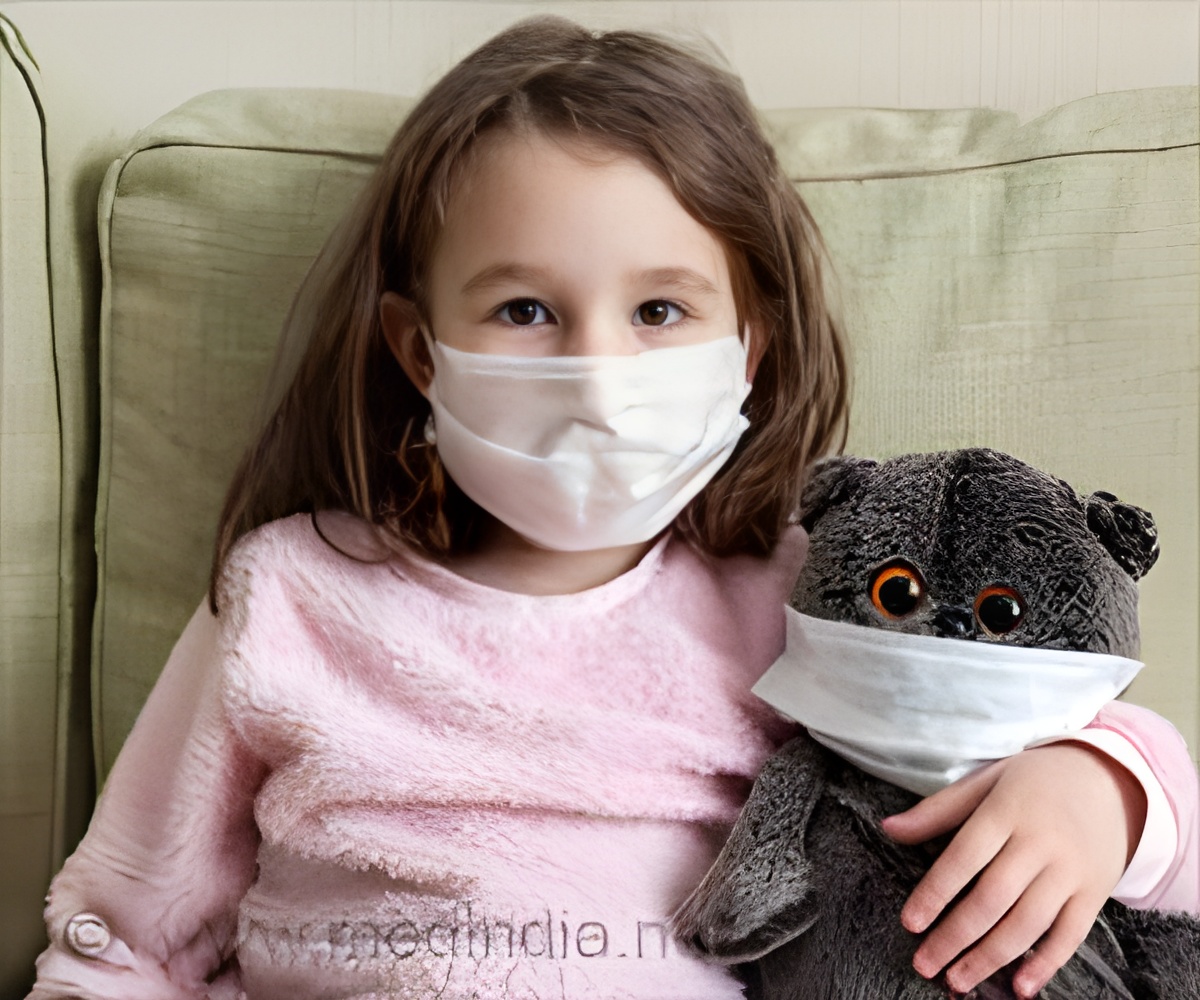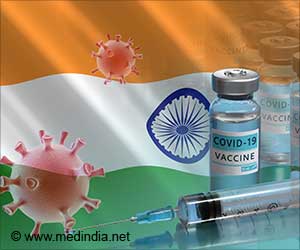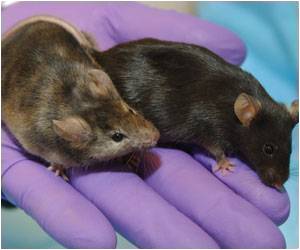Children or kids with a positive COVID test are more likely to have long COVID symptoms for at least two months.

‘Kids with a positive COVID-19 diagnosis are more likely to experience long-lasting symptoms for at least two months.’
Read More..




Read More..
Advertisement
Highlights of the Study
- National level survey data was collected from children aged 0 to 14 years in Denmark as part of the largest study of long COVID in children to date.//
- The study investigated duration of long COVID symptoms alongside quality-of-life scores, confirming that children with a positive COVID test are more likely to experience at least one symptom lasting longer than two months following infection, than children who had never been diagnosed with COVID-19.
- In older age groups (ages 12–14 years), quality of life scores were higher and reports of anxiety were lower for children who had tested positive for COVID-19 than children who had not, likely linked to awareness about the pandemic and societal restrictions.
- Authors say that knowledge of the burden of long COVID in children is essential to guide clinical recognition, caregiving strategies, and societal decisions such as lockdowns and vaccination. They recommend further research to better understand the long-term consequences of the COVID-19 pandemic on all children.
Advertisement
Does Long COVID Affect Children?
The largest study to date of long COVID symptoms in children aged 0 to 14 years confirms that children who have received a COVID-19 diagnosis can experience symptoms of long COVID lasting at least two months. The study, published in The Lancet Child and Adolescent Health, used national level sampling of children in Denmark and matched COVID-19 positive cases with a control group of children with no prior history of a COVID-19 infection. “The overall aim of our study was to determine the prevalence of long-lasting symptoms in children and infants, alongside quality of life, and absence from school or day care. Our results reveal that, although children with a positive COVID-19 diagnosis are more likely to experience long-lasting symptoms than children with no previous COVID-19 diagnosis, the pandemic has affected every aspect of all young people’s lives. Further research into the long-term consequences of the pandemic on all children will be important going forwards,” says Professor Selina Kikkenborg Berg, Copenhagen University Hospital, Denmark.Most previous studies of long COVID in young people have focused on adolescents, with infants and toddlers seldom represented. In this research, surveys were sent to the mother or guardian of children between 0-14 years who had tested positive for COVID-19 between January 2020 and July 2021. In total, responses were received for almost 11,000 children with a positive COVID-19 test result who were matched by age and sex to over 33,000 children who had never tested positive for COVID-19.
Advertisement
Most Common Symptoms of Long COVID in Kids
The surveys asked participants about the 23 most common symptoms of long COVID in children (identified by the Long COVID Kids Rapid Survey January 2021) and used the World Health Organization definition of long COVID as symptoms lasting more than two months. The most commonly reported symptoms among children 0 to 3 years old were mood swings, rashes and stomach aches. Among 4 to 11 years old the most commonly reported symptoms were mood swings, trouble remembering or concentrating and rashes, and among 12 to 14 years old, fatigue, mood swings and trouble remembering or concentrating.The results of the study found children diagnosed with COVID-19, in all age groups, to be more likely to experience at least one symptom for two months or longer than the control group. In the 0 to 3 years age group, 40% of children diagnosed with COVID-19 (478 of 1,194 children) experienced symptoms for longer than two months, compared to 27% of controls (1,049 of 3,855 children). For the 4 to 11 years age group, the ratio was 38% of cases (1,912 of 5,023 children) compared to 34% of controls (6,189 of 18,372 children) and for the 12 to 14 years age group, 46% of cases (1,313 of 2,857 children) compared to 41% of controls (4,454 of 10,789 children) experienced long-lasting symptoms.
The types of non-specific symptoms associated with long COVID are often experienced by otherwise healthy children; headache, mood swings, abdominal pain and fatigue are all symptoms of common ailments that children experience which are unrelated to COVID-19. However, this study revealed that children with a positive COVID-19 diagnosis were more likely to experience long-lasting symptoms than children who had never had a positive diagnosis, suggesting that these symptoms were a presentation of long COVID. This is supported by approximately one third of children with positive COVID-19 tests experiencing symptoms that were not present before the SARS-CoV-2 infection. In addition, with increasing duration of symptoms, the proportion of children with those symptoms tended to decrease.
Generally, children diagnosed with COVID-19 reported less psychological and social problems than children in the control group. In older age groups, cases often felt less scared, had less trouble sleeping, and felt less worried about what would happen to them. A likely explanation for this is the increased pandemic awareness in older age groups, with children in the control group experiencing fear of the unknown disease and more restricted everyday life due to protecting themselves from catching the virus.
“The opportunity to undertake such research is rapidly closing as the vast majority of children have now had a COVID-19 infection, for example 58% of children in Denmark had lab confirmed infection between December 2021 and February 2022. Knowledge of long-term symptom burden in SARS-CoV-2 positive children is essential to guide clinical recognition, parental caregiving, and societal decisions about isolation, lockdown, non-pharmaceutical interventions, and vaccine strategies,” says Prof. Selina Kikkenborg Berg.
“Our findings align with previous studies of long COVID in adolescents showing that, although the chances of children experiencing long COVID is low, especially compared to control groups, it must be recognised and treated seriously. More research will be beneficial to treat and better understand these symptoms and the long-term consequences of the pandemic on children going forward.”
The authors acknowledge some limitations with the study, including a long recall period between diagnosis and taking the survey. The research relied on parent reported data which is less accurate for psychological symptoms. This can also lead to selection bias as the mothers and guardians of children with more severe symptoms are often keener to respond, therefore leading to the results representing the most affected children. In addition, public testing for COVID-19 was only available from August 2020, meaning that some children in the control group could have had undetected asymptomatic infections.
Writing in a linked Comment, Maren Rytter, University of Copenhagen, Denmark, who was not involved in the study, said: “[Although] the study found that symptoms of any kind were slightly more frequent in children who had been infected with SARS-CoV-2…the overall impact on children of having had COVID-19 is probably small, and likely much less than the impact of the indirect effects of the pandemic. For most children with non-specific symptoms following COVID-19, the symptoms are more likely to be caused by something other than COVID-19 and if they are related to COVID-19, they are likely to pass with time.”
Source-Eurekalert














